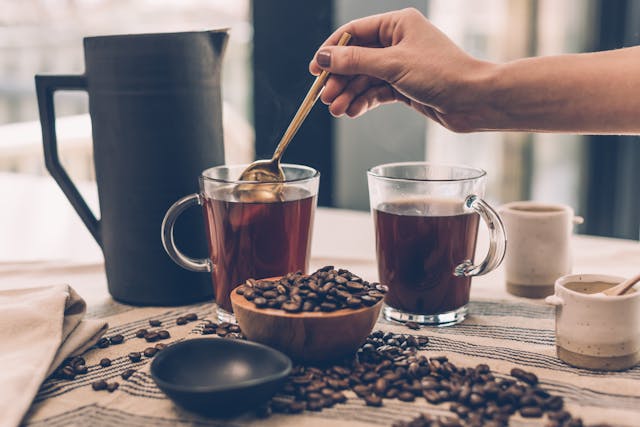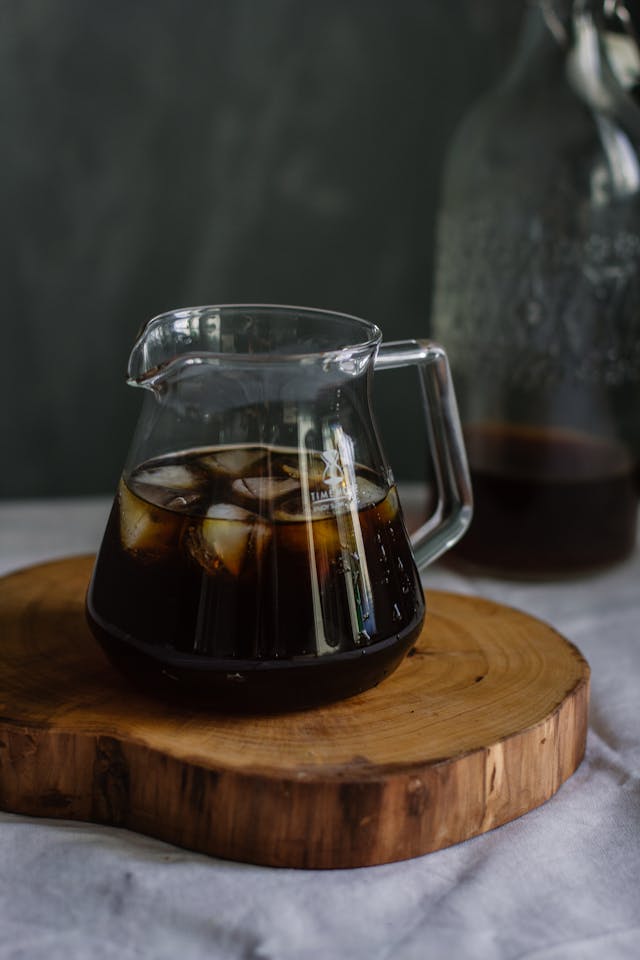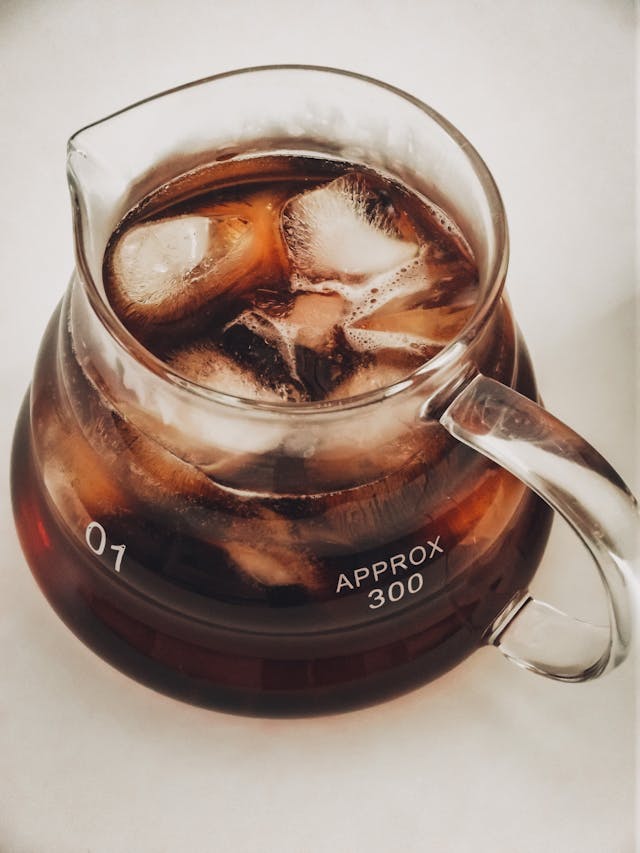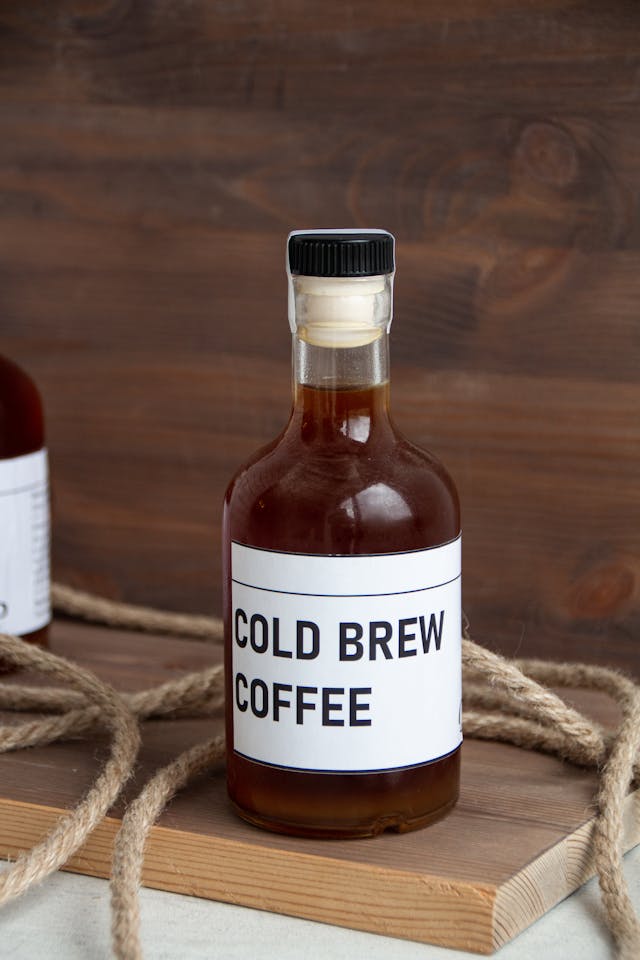Cold brew coffee has become increasingly popular in recent years, with many coffee lovers opting for this refreshing and smooth alternative to traditional hot coffee. While the brewing method plays a significant role in the final product, the type of coffee beans used is equally important. Choosing the right beans can make all the difference in achieving a balanced, flavorful, and satisfying cold brew. In this article, we will explore the best coffee beans for cold brew and provide insight into what makes them stand out.
When it comes to cold brew coffee, flavor is key. The brewing process extracts a different set of flavors and aromas than hot coffee, resulting in a unique taste profile. To achieve the best possible flavor, it’s important to select the right type of coffee beans. Factors such as roast profile, origin, and bean variety can all impact the final product. In this article, we will delve into the world of cold brew coffee beans and help you choose the best ones for your taste preferences and brewing style.
Key Takeaways
- Choosing the right coffee beans is crucial for achieving a balanced and flavorful cold brew.
- Factors such as roast profile, origin, and bean variety can impact the taste of cold brew coffee.
- Experimenting with different beans and brewing techniques can enhance your cold brew experience.
Understanding Cold Brew Coffee
Defining Cold Brew
Cold brew coffee is a method of coffee preparation that involves steeping coffee grounds in cold water for an extended period of time, typically 12-24 hours. The result is a smooth, low-acid coffee concentrate that can be diluted with water or milk to make a refreshing cold beverage.
Cold Brew vs. Iced Coffee
Cold brew coffee is often confused with iced coffee, but they are not the same thing. Iced coffee is made by brewing hot coffee and then chilling it with ice. Cold brew, on the other hand, is made by steeping coffee grounds in cold water from the start. The result is a coffee with a smoother, less bitter flavor than iced coffee.
Benefits of Cold Brew
One of the main benefits of cold brew coffee is its low acidity. Because the coffee is brewed with cold water, it has a lower acidity than hot-brewed coffee. This makes it a good option for people with sensitive stomachs or acid reflux.
Another benefit of cold brew coffee is its flavor profile. Because the coffee is steeped slowly over a long period of time, it has a smoother, less bitter taste than hot-brewed coffee. This makes it a great option for people who want to enjoy coffee without the harshness of traditional coffee.
Finally, cold brew coffee also has a higher caffeine content than hot-brewed coffee. This is because the longer steeping time allows for more caffeine to be extracted from the coffee grounds. However, it’s important to note that the caffeine content can vary depending on the type of coffee beans used and the brewing method.
In summary, cold brew coffee is a refreshing and flavorful alternative to traditional hot-brewed coffee. Its low acidity, smooth taste, and higher caffeine content make it a popular choice among coffee lovers.
Choosing the Right Beans
When it comes to making cold brew coffee, choosing the right beans is crucial. Here are some factors to consider when selecting the best beans for your cold brew.
Arabica vs. Robusta
Arabica and Robusta are the two most common types of coffee beans. Arabica beans are known for their delicate and nuanced flavors, while Robusta beans are more bitter and have a higher caffeine content. For cold brew, Arabica beans are generally preferred, as they produce a smoother and less acidic brew.
Single Origin vs. Blends
Single origin beans come from a specific region, while blends are a combination of beans from different regions. Single origin beans are often prized for their unique flavors and characteristics, while blends are designed to create a consistent flavor profile. When choosing beans for cold brew, both options can work well, depending on the desired flavor.
Understanding Roast Levels
Roast level refers to the degree to which the beans have been roasted. Light roast beans are roasted for a shorter amount of time and have a lighter color and milder flavor. Medium roast beans are roasted for a longer time and have a richer flavor. Dark roast beans are roasted the longest and have a bold and intense flavor. For cold brew, medium roast beans are generally recommended, as they produce a well-balanced and smooth flavor profile.
Overall, the best beans for cold brew are those that produce a smooth and flavorful brew. By considering factors such as bean type, origin, and roast level, you can choose the perfect beans for your cold brew coffee.
The Importance of Roast Profile
The roast profile of coffee beans is a crucial factor in determining the flavor and aroma of cold brew coffee. The degree of roast affects the taste, acidity, and body of the coffee. In this section, we will discuss the different roast profiles and their impact on the flavor of cold brew coffee.
Light Roasts
Light roasts are the least roasted coffee beans, and they have a light brown color. They have a high acidity level and a light body, making them perfect for cold brew coffee. Light roasts have a delicate flavor with subtle notes of chocolate, caramel, and floral notes. They also have a bright and fruity taste that is perfect for those who prefer a mild coffee flavor.
Medium Roasts
Medium roasts are the most common roast profile for coffee beans. They have a medium brown color and a balanced acidity level and body. Medium roasts have a rich and nutty flavor with hints of chocolate and caramel. They also have a slightly sweet taste that is perfect for those who prefer a medium coffee flavor.
Dark Roasts
Dark roasts are the most roasted coffee beans, and they have a dark brown color. They have a low acidity level and a full body, making them perfect for cold brew coffee. Dark roasts have a bold and robust flavor with strong notes of chocolate and earthy tones. They also have a slightly bitter taste that is perfect for those who prefer a strong coffee flavor.
In conclusion, the roast profile of coffee beans plays a significant role in determining the flavor and aroma of cold brew coffee. Whether you prefer a light, medium, or dark roast, each profile has its unique taste and aroma that will satisfy your coffee cravings.
Optimal Grind Size for Cold Brew
When it comes to making the best cold brew coffee, the grind size is a crucial factor that can make or break the final taste. In this section, we will discuss the optimal grind size for cold brew and its impact on the flavor and quality of the coffee.
Coarse vs. Fine Grind
Cold brew requires a coarser grind than other brewing methods like pour over or French press. A coarse grind ensures that the coffee grounds are large enough to be filtered out easily, preventing over-extraction and bitterness. A fine grind, on the other hand, can result in a cloudy and gritty brew.
Grind Consistency
Apart from the coarseness, the consistency of the grind is also important for cold brew. A consistent grind ensures that all the coffee particles are of the same size, which leads to even extraction and a balanced flavor. Inconsistent grinds can result in over-extraction of some particles and under-extraction of others, leading to an unbalanced taste.
When choosing the grind size for cold brew, it is important to consider the filter that will be used. A metal mesh filter can handle a coarser grind, while a paper filter may require a finer grind to prevent clogging. French press requires a coarser grind than pour over, which needs a medium-fine grind.
In conclusion, the optimal grind size for cold brew is a coarse, consistent grind that can be easily filtered out. By choosing the right grind size and consistency, one can ensure a smooth and flavorful cold brew coffee.
Freshness and Storage
Bean Freshness
When it comes to cold brew coffee, freshness is key. The longer coffee beans sit after being roasted, the more their flavor and aroma will deteriorate. To achieve the best flavor, it is recommended to use beans that have been roasted within two weeks.
Whole bean coffee is the preferred choice for cold brew as it maintains its freshness for a longer period of time than pre-ground coffee. When purchasing coffee beans, it is important to check the roast date on the packaging to ensure that they are as fresh as possible.
Storage Solutions
Proper storage is crucial for maintaining the freshness of coffee beans. It is recommended to store coffee beans in an airtight container in a cool, dark place. Exposure to air, light, and heat can cause the beans to go stale and lose their flavor.
For optimal freshness, it is best to purchase coffee beans in small quantities and use them within two weeks of the roast date. If storing beans for a longer period of time, it is recommended to freeze them in an airtight container. When ready to use, allow the beans to come to room temperature before grinding and brewing.
Overall, ensuring the freshness of coffee beans and proper storage is essential for achieving the best flavor in cold brew coffee. By following these simple guidelines, coffee enthusiasts can enjoy a delicious and satisfying cup of cold brew every time.
Brewing Techniques and Ratios
Extraction Time
The extraction time is a crucial factor in determining the strength and flavor of cold brew coffee. The general rule of thumb is to steep the coffee for 12-24 hours at room temperature. However, some coffee beans may require a longer steeping time, while others may require less. It is recommended to experiment with different steeping times to find the perfect balance of flavor and strength that suits your taste.
Water to Coffee Ratio
The water to coffee ratio is another critical factor in making a perfect cup of cold brew coffee. The recommended ratio is 1:4, which means one part coffee to four parts water. However, some coffee beans may require a different ratio to achieve the desired flavor and strength. It is essential to experiment with different ratios to find the perfect balance.
To make cold brew at home, it is recommended to use a French press or a cold brew coffee maker. The process is simple and straightforward. Add coffee grounds to the French press or coffee maker, add water, and let it steep for the desired time. Once the steeping is complete, press the plunger of the French press or strain the coffee through a filter in the coffee maker to remove the grounds.
A cold brew recipe that is easy to follow is to use 1 cup of coarsely ground coffee beans and 4 cups of cold water. Combine the coffee and water in a jar or pitcher, stir, and let it steep for 12-24 hours at room temperature. Once the steeping is complete, strain the coffee through a fine-mesh sieve or a coffee filter to remove the grounds.
In conclusion, the brewing technique and ratio are crucial factors in making a perfect cup of cold brew coffee. It is recommended to experiment with different steeping times and water to coffee ratios to find the perfect balance of flavor and strength.
Best Coffee Beans for Cold Brew
When it comes to cold brew coffee, the type of coffee beans used can make a big difference in the flavor and overall experience. In this section, we’ll explore some of the best coffee beans for cold brew.
Top Picks for Cold Brew Beans
- Bizzy Organic Cold Brew: This medium roast coffee is specifically designed for cold brew and has a smooth, low-acid flavor. It’s made with 100% organic Arabica beans and is a popular choice among cold brew enthusiasts.
- Stone Street Cold Brew: This dark roast coffee is also specially crafted for cold brew and has a bold, rich flavor. It’s made with a blend of high-quality Arabica beans and is a great option for those who prefer a stronger coffee taste.
- Tiny Footprint Coffee: This medium roast coffee is not only delicious, but it’s also eco-friendly. It’s made with 100% organic and shade-grown Arabica beans and is carbon-negative, meaning it actually removes carbon from the atmosphere during production.
Specialty Coffee Brands
For those who want to try something a little different, there are also many specialty coffee brands that offer unique and flavorful options for cold brew.
- Lifeboost Coffee: This brand offers a variety of organic, single-origin coffees that are perfect for cold brew. Their beans are grown at high elevations and are hand-picked, resulting in a smooth and flavorful cup of coffee.
- Counter Culture Hologram: This light roast coffee has a bright, fruity flavor that’s perfect for cold brew. It’s made with a blend of Ethiopian and Kenyan beans and has notes of blueberry and citrus.
Overall, when choosing coffee beans for cold brew, it’s important to look for high-quality beans that are specifically designed for cold brewing. Whether you prefer a bold, rich flavor or a smooth, low-acid taste, there are many great options available to suit your preferences.
Sustainability and Ethical Considerations
Organic and Fair Trade Options
When it comes to cold brew coffee beans, there are many options available that are both organic and fair trade certified. Organic coffee beans are grown without the use of harmful pesticides and chemicals, which not only benefits the environment but also the health of the farmers and consumers. Fair trade certification ensures that the coffee farmers are paid fairly for their work and are not exploited by middlemen.
Some popular brands that offer both organic and fair trade cold brew coffee beans include Equal Exchange, Allegro Coffee, and Kicking Horse Coffee. These brands prioritize sustainability and ethical practices, making them a great choice for consumers who want to make a positive impact with their coffee purchases.
Environmental Impact
In addition to organic and fair trade certifications, there are other environmental considerations to keep in mind when choosing cold brew coffee beans. Shade-grown coffee, for example, is grown under a canopy of trees, which provides habitat for wildlife and helps to prevent soil erosion. This method of coffee farming also requires less water and reduces the need for chemical fertilizers.
Climate change is another important factor to consider. Coffee farming is vulnerable to the impacts of climate change, including droughts, floods, and pests. Some companies are taking steps to mitigate their carbon footprint by implementing sustainable practices such as using renewable energy and reducing waste.
Overall, when choosing cold brew coffee beans, it’s important to consider the sustainability and ethical practices of the brand. By choosing organic, fair trade, and shade-grown options, consumers can make a positive impact on both the environment and the lives of coffee farmers.
Enhancing Your Cold Brew Experience
Cold brew coffee is a refreshing and delicious way to enjoy coffee, especially during hot weather. However, there are ways to enhance the flavor and experience of your cold brew. Here are some tips to take your cold brew to the next level.
Pairing with Additives
Cold brew coffee is versatile and can be enjoyed on its own or paired with additives such as milk, syrups, and chocolate. Adding milk to cold brew creates a creamy and smooth texture that is perfect for a cold brew latte. For a chocolaty twist, add a tablespoon of chocolate syrup or cocoa powder to your cold brew.
Syrupy additives like caramel or vanilla syrup can add a touch of sweetness to your cold brew. These syrups can be added to the cold brew before or after brewing. A dash of cinnamon or nutmeg can also add warmth and depth to the flavor.
Cold Brew Variations
There are various ways to enjoy cold brew, and experimenting with different brewing methods can add a unique twist to your cold brew experience. Japanese iced coffee is a popular method where hot water is poured over coffee grounds, and the resulting coffee is immediately chilled with ice.
New Orleans-style cold brew is another variation that involves brewing coffee with chicory root and spices. This method produces a bold and flavorful cold brew that is perfect for those who prefer a strong coffee taste.
In conclusion, cold brew coffee is a great way to enjoy coffee, and adding additives or experimenting with different brewing methods can enhance the flavor and experience. Whether you prefer a creamy cold brew latte or a bold New Orleans-style cold brew, there are endless possibilities to enjoy this refreshing coffee beverage.
Frequently Asked Questions
What roast level is ideal for making cold brew coffee?
The ideal roast level for cold brew coffee is medium to dark. These roasts have a lower acidity level and a bolder flavor profile, which works well with the cold brewing process. Light roasts tend to be more acidic and may result in a sour taste when brewed cold.
How does bean origin affect the flavor of cold brew?
Bean origin can have a significant impact on the flavor of cold brew coffee. Beans grown in different regions have distinct flavor profiles based on factors such as climate, soil, and altitude. For example, beans grown in South America tend to have a nutty, chocolatey flavor, while beans from Africa have a fruity, floral taste. Experimenting with different origins can help you find the flavor profile that best suits your taste preferences.
What is the optimal grind size for cold brew coffee beans?
The optimal grind size for cold brew coffee beans is coarse. A coarse grind allows for a slower extraction process, resulting in a smoother and less bitter taste. Finer grinds can result in over-extraction, which can lead to a bitter taste and cloudy appearance.
Are single-origin coffee beans or blends better for cold brew?
Both single-origin coffee beans and blends can be great options for cold brew. Single-origin beans offer a unique flavor profile that reflects the specific region they were grown in. Blends, on the other hand, can offer a more complex flavor profile by combining beans from different regions. Ultimately, the choice between single-origin and blends comes down to personal preference.
How should I store coffee beans for cold brewing to maintain freshness?
To maintain freshness, store coffee beans for cold brewing in an airtight container in a cool, dark place. Avoid storing them in the refrigerator or freezer, as moisture can impact the flavor of the beans. It’s also best to buy whole beans and grind them just before brewing to ensure maximum freshness.
What are the characteristics of coffee beans that are well-suited for cold brew?
Coffee beans that are well-suited for cold brew have a low acidity level and a bold, smooth flavor profile. They should also be roasted to a medium to dark level and have a coarse grind size. Some popular varieties for cold brew include Brazilian, Colombian, and Sumatran beans.















Comments are closed.